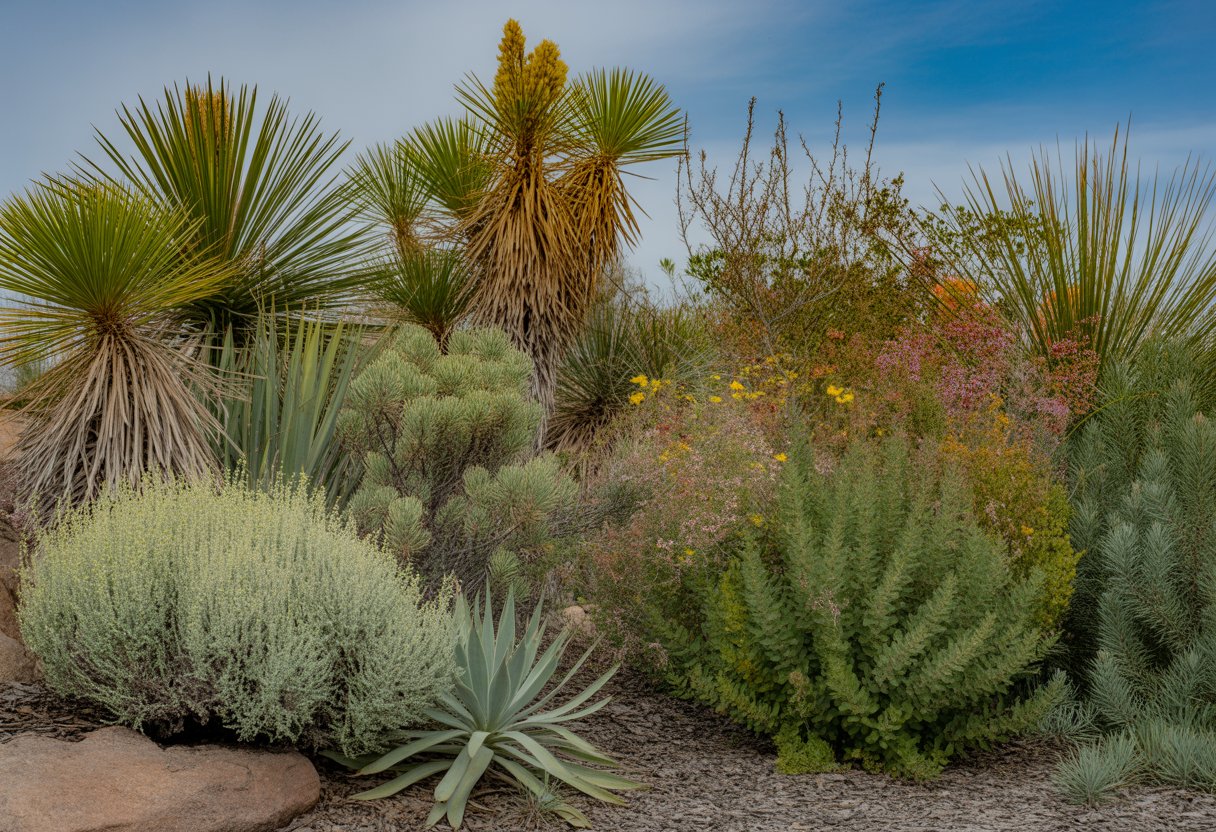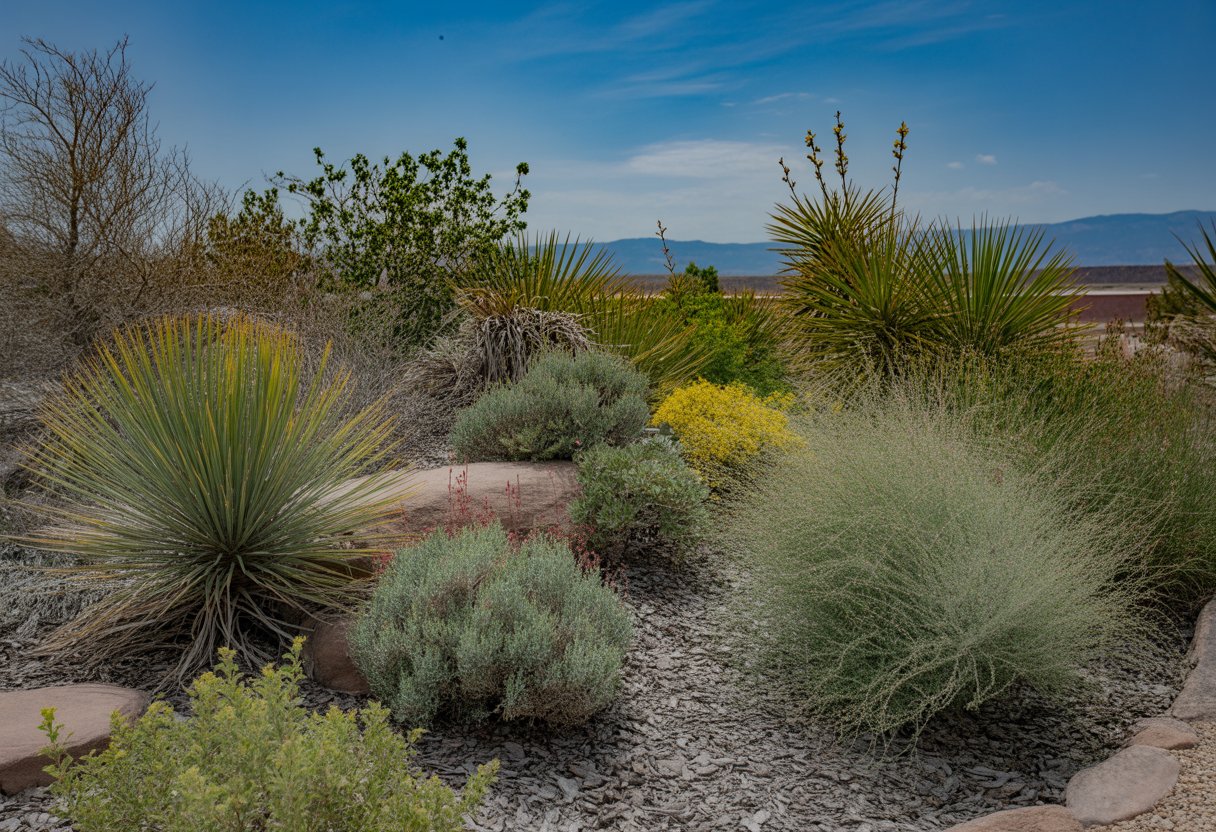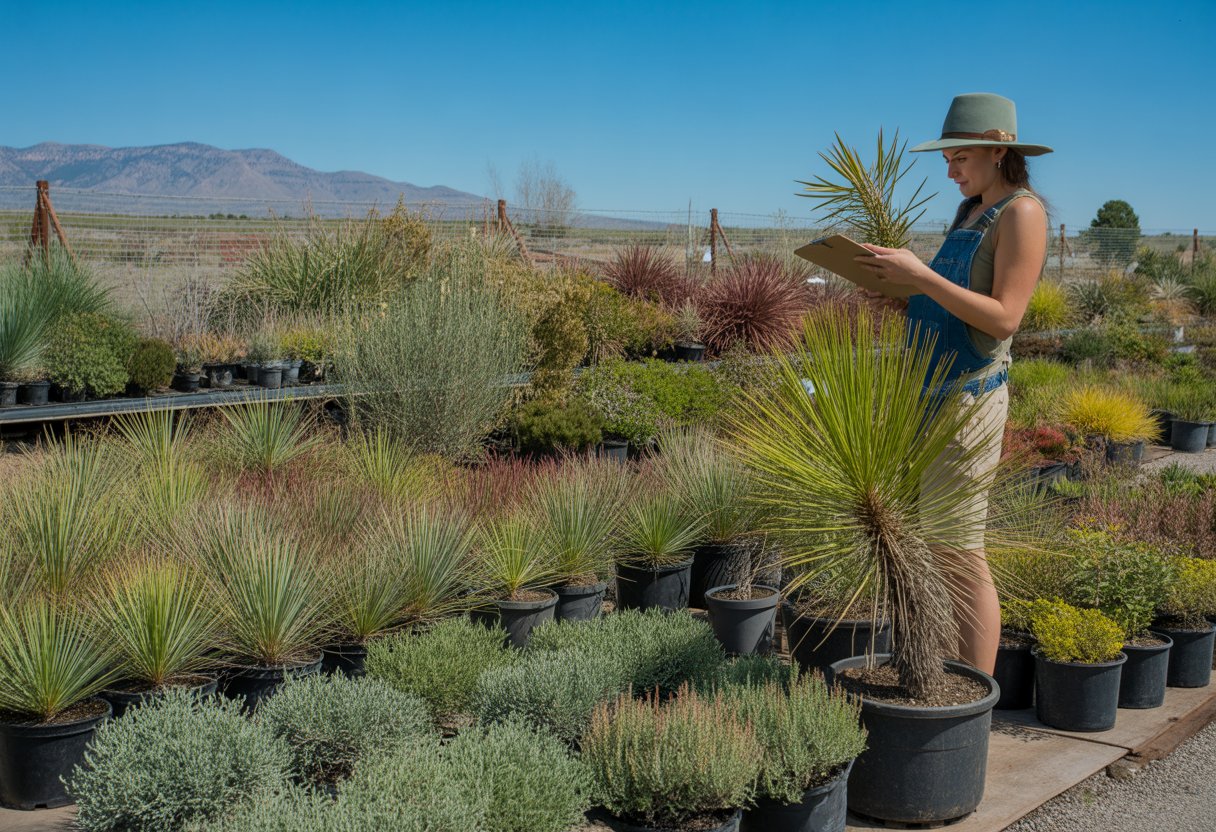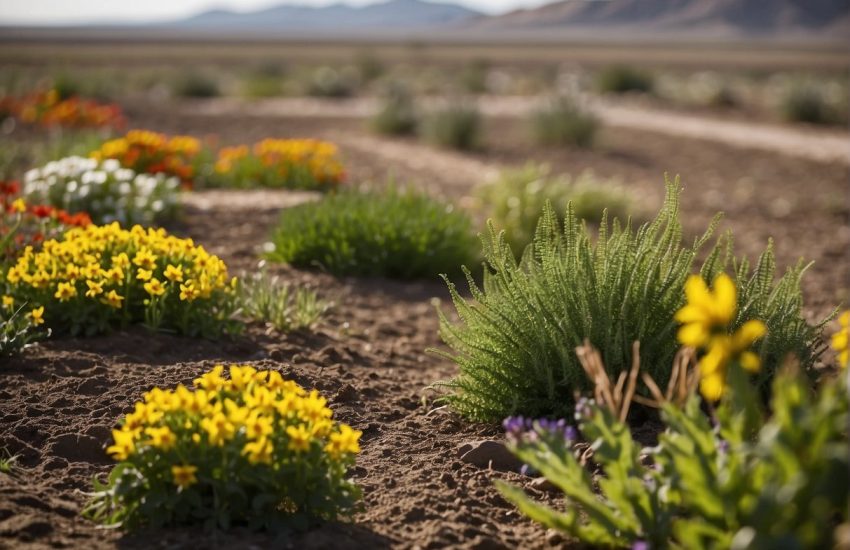Drought Tolerant Native Plants Colorado for Sustainable Landscaping and Water Conservation
Colorado gets pretty dry, and rainfall can be all over the place. Picking the right plants isn’t just a good idea—it’s kind of necessary if you want a yard that survives.
Native plants that already know how to handle these conditions are a smart answer to water shortages and tricky soil.

Drought-tolerant native plants in Colorado, such as yucca, penstemon, and blue grama grass, thrive with minimal irrigation and support local ecosystems. These plants basically fend for themselves, so they’re perfect for drought-resistant gardens.
If you go native and drought-tolerant, you’ll spend less time maintaining your yard and use way less water. Plus, you end up with a landscape that looks good and actually helps the environment.
Core Principles of Drought Tolerant Native Plants in Colorado
Drought tolerant native plants in Colorado get by on very little water. They’re built for the dry, sometimes harsh conditions all over the state.
What Makes Plants Drought Tolerant
Most drought tolerant plants have roots that dig deep to reach water buried way down. A lot of Colorado natives also have small, waxy, or even fuzzy leaves—anything to hold onto every drop.
When things get really dry, these plants can just hit pause and wait it out. Thick cuticles and smaller leaves help them keep their moisture close.
They’re able to ride out long stretches of dry weather. That’s a lifesaver in Colorado, where rain can be hit or miss.
Benefits for Colorado Landscapes
Landscaping with drought tolerant natives cuts down on water use, which is huge as Colorado keeps getting drier. Less reliance on sprinklers means lower water bills—who doesn’t like that?
Native plants attract pollinators and wildlife, making your yard feel more alive. Once they settle in, they’re pretty easygoing compared to non-natives.
Their roots help keep soil in place, so you’re less likely to see erosion when the wind picks up. You’ll also need fewer chemicals, since these plants know how to handle local pests.
Xeric Landscaping and Reducing Water Use
Xeric landscaping is all about gardens that don’t need much water. Using Colorado’s drought tolerant natives is at the heart of that idea.
You can group plants with similar needs to make watering easier and more efficient. Mulch and compost help the soil stay moist longer.
With xeric designs, outdoor water use drops a lot—which is honestly crucial in Colorado. You still get a good-looking yard, just without all the extra watering.
Popular Drought Tolerant Native Plants for Colorado Gardens
Drought tolerance isn’t optional for plants in Colorado’s climate. Plenty of native species thrive with barely any water and still make your garden look great.
You’ll find everything from perennials to shrubs and even trees that can handle dry spells and wild temperature swings.
Penstemon and Its Varieties
Penstemon is a Colorado staple—those tubular flowers are a magnet for bees and hummingbirds. You’ll see varieties like Penstemon strictus and Penstemon grandiflorus with blue, purple, or pink blooms.
They usually grow 1 to 3 feet tall and prefer sun and well-drained soil. Once they’re settled in, you barely have to water them.
If you deadhead the flowers, you’ll get even more blooms. Penstemons help keep soil in place and fit right in with rock gardens or wilder spaces.
Prairie Coneflower And Ratibida Columnifera
Prairie coneflower (Ratibida columnifera) pops up all over Colorado’s grasslands. It grows about 2 to 3 feet tall, with drooping petals around a tall cone.
It blooms from early summer into fall and doesn’t mind tough soil or dry conditions. Give it full sun and it barely needs water.
Its deep roots help it survive drought and keep the soil from washing away. The flowers, in shades of red, yellow, or brown, bring in pollinators and add some color.
Artemisia Tridentata (Big Sagebrush)
Big sagebrush (Artemisia tridentata) is a classic Colorado shrub. It can reach 6 feet and has those silvery, aromatic leaves you can smell on the breeze.
Sagebrush shrugs off drought and poor soil, so it’s a mainstay for xeric landscapes. Wildlife use it for shelter, and its roots fight erosion.
You won’t have to fuss over it—full sun and it’s good to go. Sagebrush is tough against pests and works well as a hedge or windbreak.
Ponderosa Pine and Other Drought Resistant Trees
Ponderosa pine (Pinus ponderosa) stands out as one of Colorado’s most drought-hardy trees. It can top 60 feet, with long needles and thick bark that’s practically armor.
It likes well-drained soil and lots of sun. Other good drought-resistant trees are Rocky Mountain juniper and Gambel oak.
They add variety, give some shade, and after the first couple years, you rarely need to water them. Their deep roots help them find water and keep the ground stable.
Designing and Maintaining a Drought Tolerant Landscape

If you want a landscape that saves water and thrives in Colorado’s dry climate, you’ll need to plan ahead. It’s about picking the right plants, prepping the soil, helping out local wildlife, and watering smart.
Landscape Design Tips for Xeric Gardens
A good xeric garden in Colorado will soak up the sun and keep water loss low. Group plants that like the same conditions together.
Use rocks and mulch to reduce evaporation and stop the soil from blowing away. Raised beds or mounds help drainage, especially for drought-tolerant choices.
Paths and open areas should steer rainwater toward your plants, not away. Shrub windbreaks can cut down on evaporation, and layering plant heights helps shade the soil and keep it cool.
Selecting Plants for Sandy Soil and Local Conditions
Sandy soil drains fast and doesn’t hold onto nutrients. Some natives like blue grama grass, yucca, and prickly pear cactus don’t mind—they actually prefer it.
It helps to mix in compost or other organic matter to hold moisture. Pay attention to your yard’s microclimates—full sun, shade, wind, soil depth—when picking plants.
Supporting Pollinators and Attracting Butterflies
Add native flowers like milkweed, coneflower, and penstemon to bring in pollinators and butterflies. They’ll get nectar and places to breed, which boosts biodiversity.
Skip the pesticides—they’ll just chase off the good bugs. Flat stones in sunny spots give butterflies a place to warm up, and a shallow dish with sand and water can help pollinators during dry spells.
Supplemental Water and Efficient Irrigation Practices
Try to water as little as possible, and do it early in the morning to cut down on evaporation. Drip irrigation is way more efficient than sprinklers, since it goes right to the roots.
Keep an eye on soil moisture and change up your watering as the seasons shift. Grouping plants by how much water they need keeps things simple and avoids waste.
Mulch helps the soil hold onto water longer, so you don’t have to water as often.
Resources and Plant Procurement in Colorado

Getting the right native plants in Colorado means leaning on local know-how and good resources. You’ll want to find solid suppliers, tap into university info, and follow best practices for planting.
Finding Native Plants at Local Nurseries
A lot of Colorado nurseries carry drought-tolerant natives, often grown locally. Places like Cornerstone Native Plant Nursery and Denver Botanic Gardens are worth checking out.
Ask where the plants come from—local is better for drought survival. Stock changes with the seasons, so plan ahead if you want something specific.
You can usually find native grasses, wildflowers, and shrubs like Rocky Mountain penstemon and buffalo grass. Staff at these nurseries often have advice tailored to your area’s quirks.
Leveraging CSU Extension and Plant Select
Colorado State University Extension has tons of resources, from planting guides to soil tips. Their advice is research-based and focused on what works here.
Plant Select, a team-up between CSU, Denver Botanic Gardens, and pros in the field, highlights plants that really do well in Colorado. Their picks are all about water savings and easy care.
Both offer lists of suggested plants, care instructions, and info on where to buy native seedlings. If you hit a snag, you can find workshops or online help for troubleshooting.
Fertilizing Practices for Native Plant Success
Native plants usually don’t need much fertilizer, since they’ve adapted to Colorado’s nutrient-poor soils. Honestly, overdoing it with fertilizer can actually make them less drought-tolerant and give weeds a leg up.
Some species, especially young ones, might appreciate a light dose of slow-release fertilizer in early spring. Organic mulches help the soil hold moisture and slowly add nutrients over time.
It’s a good idea to test your soil before reaching for any fertilizer. That way, you’ll know what’s missing and skip any unnecessary steps. Native prairie plants often do just fine with low nitrogen, so go easy and choose a balanced fertilizer that doesn’t pile on the nitrogen.


